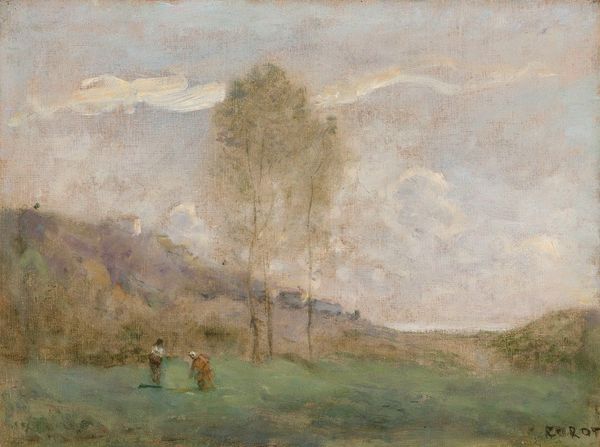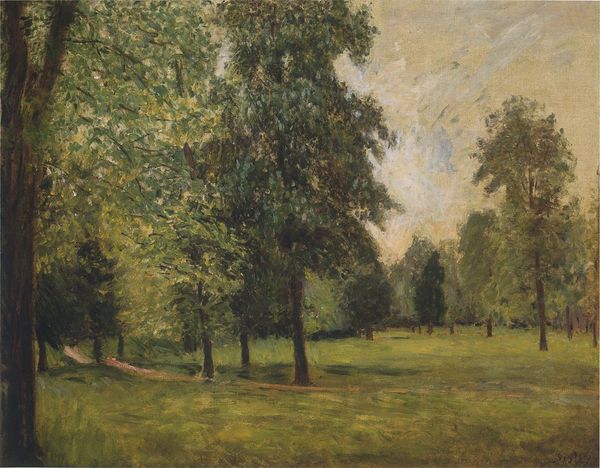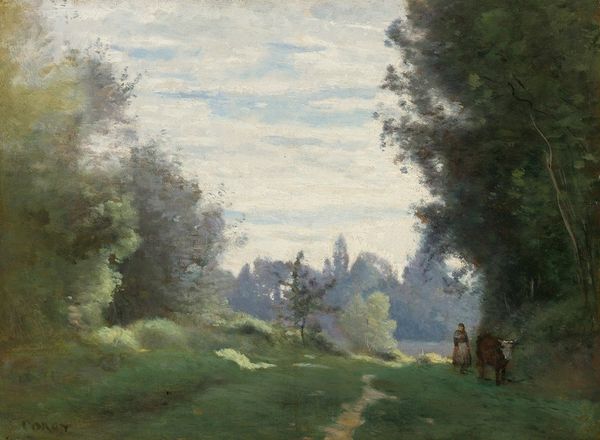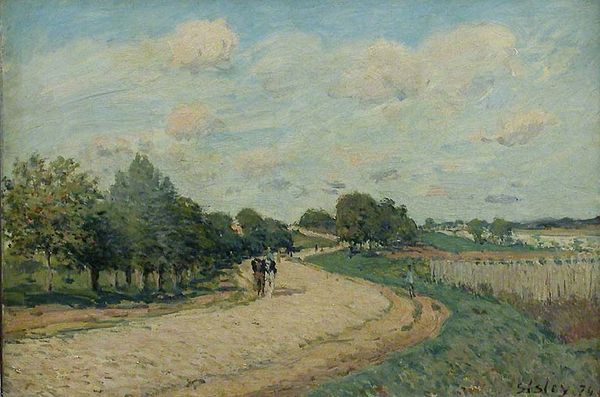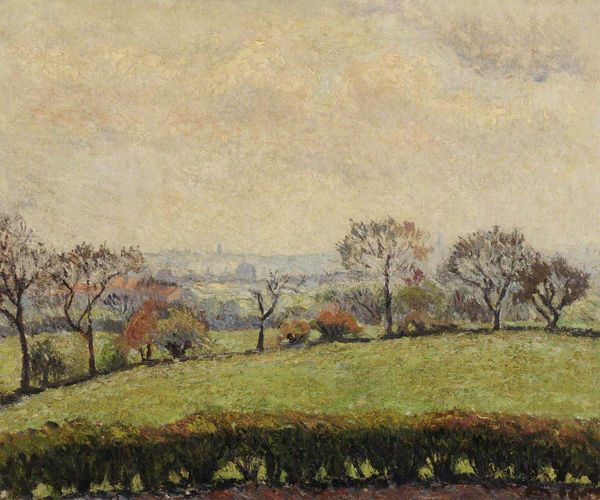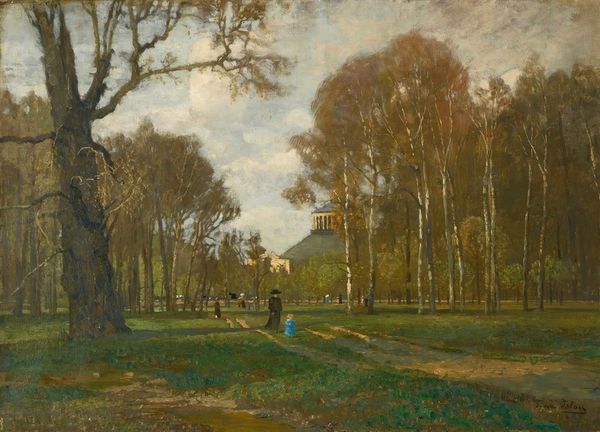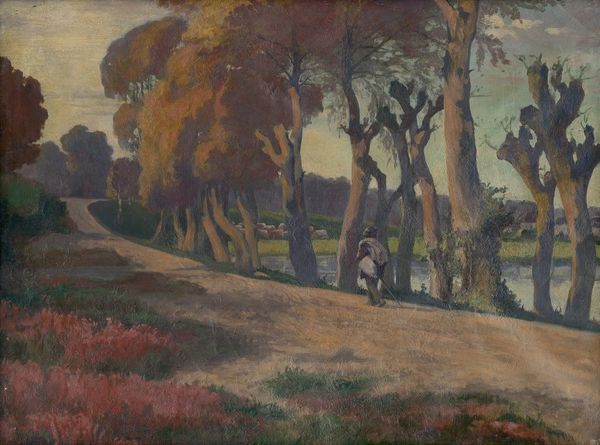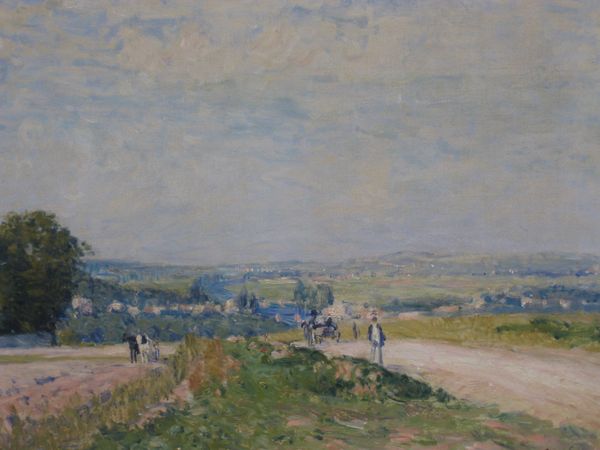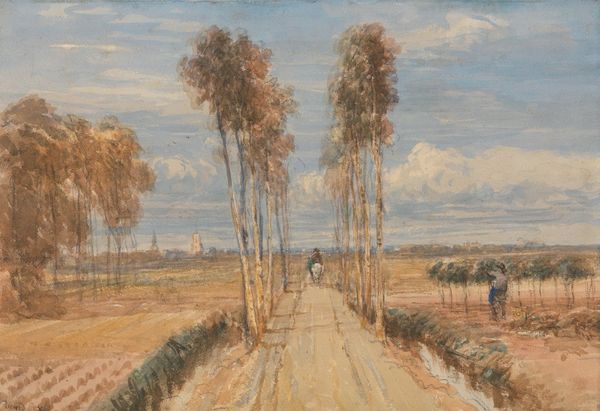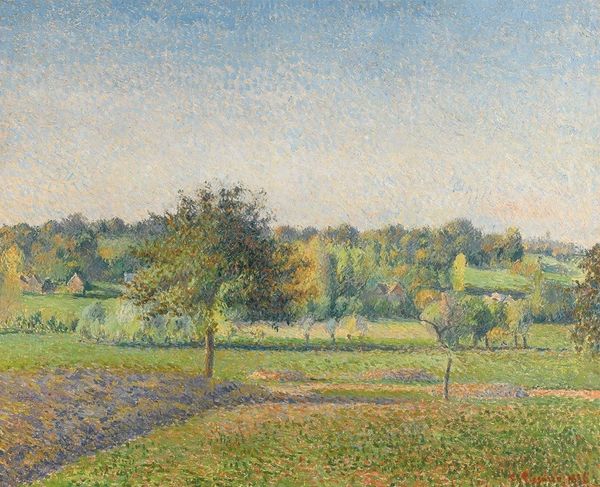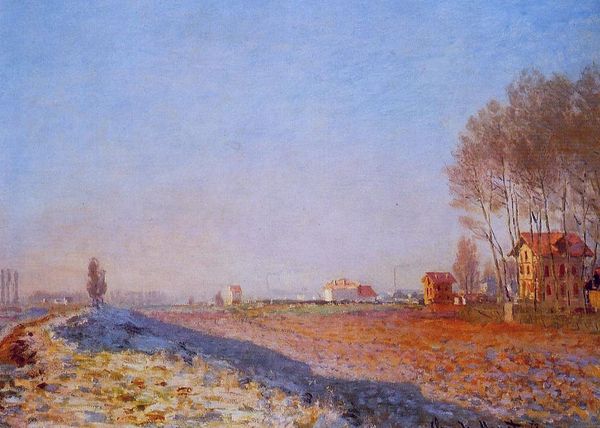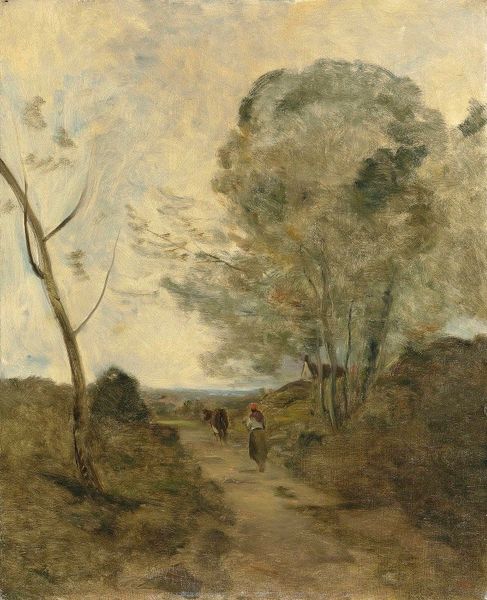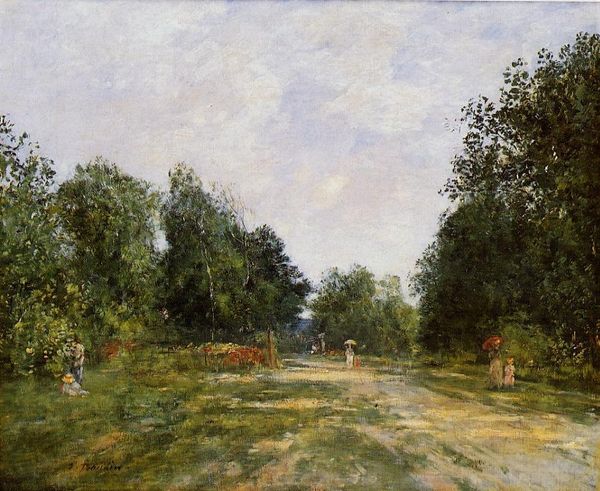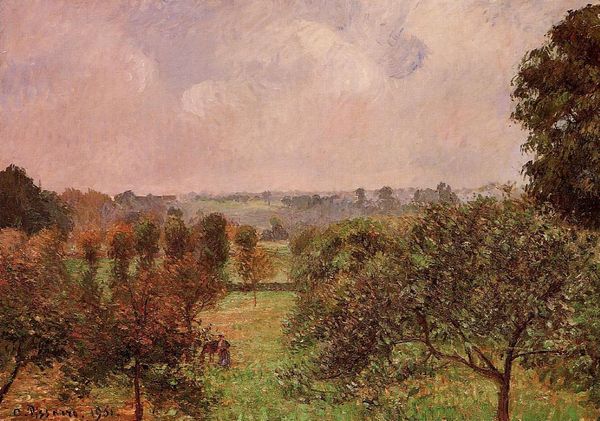
Hyde Park 1871
0:00
0:00
claudemonet
Rhode Island School of Design Museum (RISD Museum), Providence, RI, US
Copyright: Public domain
Editor: This is Claude Monet's "Hyde Park," painted in 1871. I'm immediately struck by how serene it feels, almost muted. It feels like a memory of a park rather than a literal representation. What pulls you into this painting? Curator: Ah, "Hyde Park"! For me, it's a whisper of a moment. You know, like when you're half-dreaming on a train, and the world outside flickers by? Monet, fresh off dodging the Franco-Prussian War, wasn’t just painting a park; he was painting an *impression* of peace, a quiet sigh in the bustling city. Do you feel that hushed atmosphere too? Editor: Yes, absolutely. It's less about the specific details and more about the overall feeling of the place. But is it a critique of the upper class or more of a romantic depiction? Curator: Monet isn't wagging a finger, is he? More like observing a slice of life with a gentle curiosity. The soft brushstrokes almost melt the social distinctions, don't they? It's the light and air, the shared human experience within nature’s embrace that he seems most interested in. Don’t you feel a unity there, regardless of the figures' stations? Editor: I think so. So it’s about Monet finding peace, or a sense of community maybe, during a tumultuous time. That's really beautiful. Curator: Precisely! Perhaps that's the magic of "Hyde Park" — it’s not just a pretty landscape. It’s a visual poem about finding solace in the everyday, about breathing in the beauty that persists even when the world feels upside down. I almost want to grab a blanket and join them, wouldn't you? Editor: Definitely. It’s a reminder to find those moments of peace, no matter what’s going on around us.
Comments
No comments
Be the first to comment and join the conversation on the ultimate creative platform.
